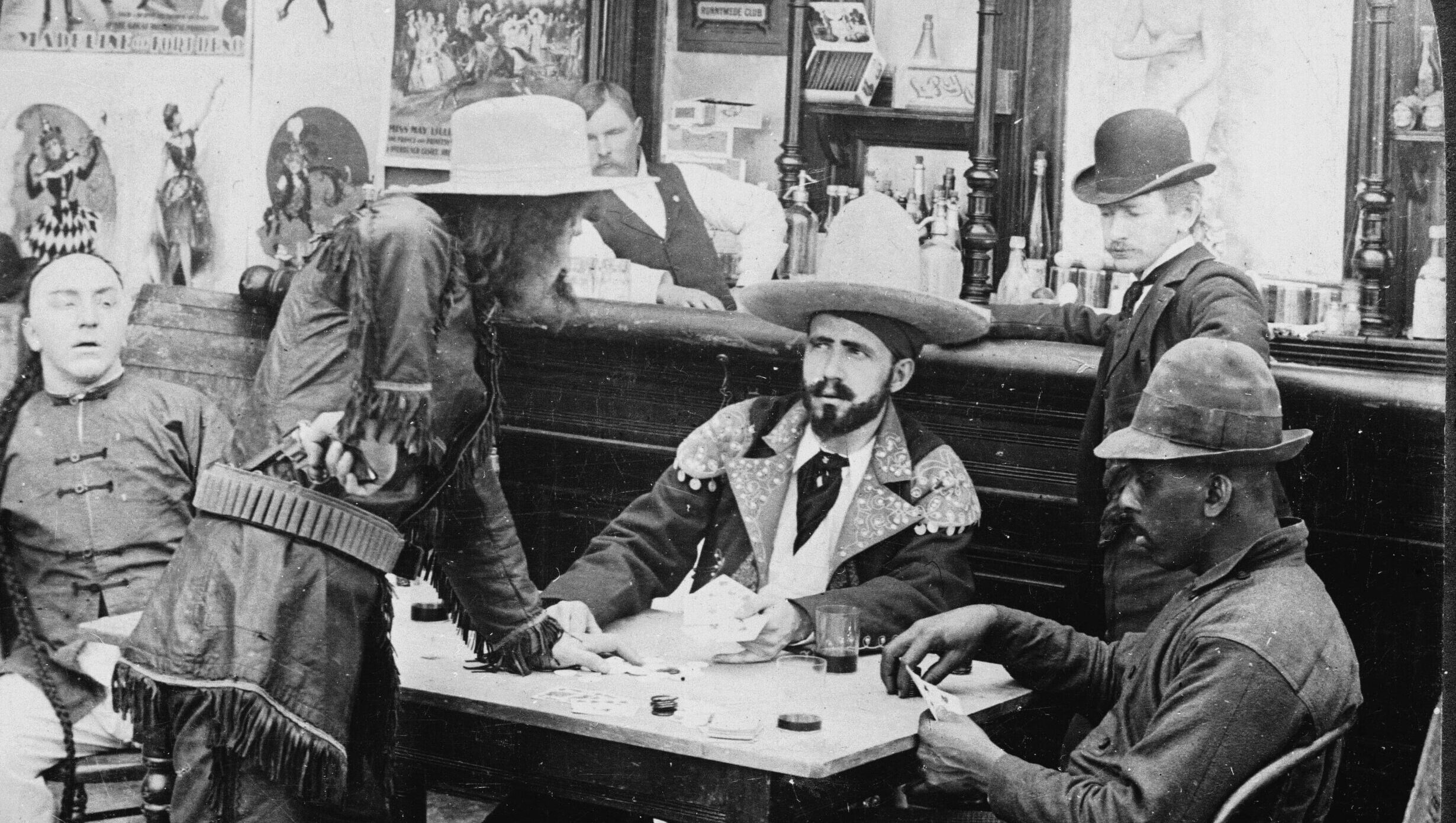This review appears in the Fall 2016 issue of Modern Age. To subscribe now, go here.
The Myth of the Andalusian Paradise:
Muslims, Christians, and Jews under Islamic Rule in Medieval Spain
By Darío Fernández-Morera
(Wilmington, DE: ISI Books, 2016)
Fifty years ago, when I was an undergraduate, the professor directing my independent study on medieval Spanish literature assigned me C. Colin Smith’s Spanish Ballads, a book I still own. The first poem in the volume contains these lines:
Madre España, ay de tí!
en el mundo tan nombrada,
de las partidas la major,
la major y más ufana,
donde nace el fino oro
y la plata no faltaba,
dotada de hermosura
y en proezas extremada;
por un perverso traidor
toda eres abrasada,
todas tus ricas ciudades
con su gente galana
las domeñan los moros
por nuestra culpa malvada. . . .
[Mother Spain, alas for you!
In the world so renowned,
best in attributes, the best and the proudest,
where fine gold is born,
not lacking in silver,
endowed with beauty
and outstanding in prowess;
by a twisted traitor
you are all devastated,
all your rich cities
with their people so gallant
the Moors master today
through our wicked fault.]
This particular fifteenth-century ballad (or romance) is just one popular expression of the typical Christian view of the conquest of Spain, by North African Muslims in AD 711, as a tragic catastrophe requiring almost eight centuries to redress.
Certain strands of modern scholarship, which have enjoyed enormous popular influence, have sought to modify this perception of medieval and early modern Spaniards by maintaining that the Muslim conquest was not especially harsh or disruptive, and, indeed, that the Christian reconquista was the real tragedy, because it brought to an end a regime of multicultural tolerance and scientific and artistic enlightenment. In The Myth of the Andalusian Paradise, Darío Fernández-Morera sets out to demonstrate that this “paradise” was not “lost,” because it was never found; that the arguments for its existence are, in fact, unfounded.
Fernández-Morera heads each of his chapters with several epigraphs proclaiming the virtues of Islamic rule in medieval Spain or al-Andalus, passages whose authors range from scholars like the aforementioned C. Colin Smith, to more popular writers like James Reston Jr., to politicians like Tony Blair. All may be taken to suggest, however subtly, that Islam was inherently superior to Christendom in its intellectual, moral, and cultural achievements, at least in its “golden age” during the medieval period. This widely circulated opinion is of more than historical or scholarly interest, since it influences—or seeks to influence—the public’s view of the relationship of Islam and Christianity in the modern world.
At any time and under any circumstances, Fernández-Morera’s book would constitute a valuable contribution to historical scholarship; in the current political and cultural situation, however, it takes on a particular urgency as well as pertinence beyond the realm of academe. The Judeo-Christian civilization of the West suffers a crisis of confidence even as it confronts a severe challenge from a radical, resurgent Islam. At the same time, the religious traditions of the West are also threatened by secular progressivism, which has perversely fixed upon Islam as a religion more compatible with the moral anarchy of an irreligious society. The purpose of The Myth of the Andalusian Paradise is to refute this “myth”—what our contemporaries are fond of calling the “narrative”—supporting the utilization of Islam as a weapon against Judeo-Christian culture.
The book is not, then, a comprehensive history of Muslim rule in Spain. Between an introduction and an epilogue, it comprises seven chapters, which, rather than proceeding chronologically from the Muslim invasion of Spain in AD 711 to the completion of the reconquista in 1492, treat various topics relevant to a comparison between the conquering Islamic civilization and the Christian civilization it displaced and that gradually displaced it in turn over the course of seven centuries. While some reviewers may regard askance Fernández-Morera’s single-minded, indeed relentless, pursuit of his thesis, it is a necessary and effective means of establishing his argument in the face of an opposing outlook resting less on evidence than on assumption and pervasive romanticizing that create the myth of his title.
The appropriate rejoinder to such mythologizing is the accumulation of historical facts based on primary sources and buttressed by a carefully organized array of specialized scholarship. The author is emphatic about the rigor of his approach:
This book gives special attention to primary sources (medieval Christian, Muslim, and Jewish chronicles; literary works; religious and legal texts; and biographies), and usually quotes them verbatim so that nonscholars can read these materials (which in modern publications on Islamic Spain frequently are not part of the narrative and often not even part of the notes) and decide for themselves whether the widespread hagiographic interpretations of Islamic Spain are warranted or not. (11)
This assertion is powerfully vindicated by more than 100 pages of documentation following 240 pages of text. As Fernández-Morera remarks, the sheer weight of accumulated evidence from medieval Muslim, Christian, and Jewish sources is a formidable obstacle to the willful insistence on finding in Islamic Spain a progressive, multicultural utopia.
First of all, he demonstrates that the Muslim entrance into Spain was an invasion, not a gradual “migration,” as some modern writers have maintained; and that the conquest was, in fact, an exceptionally ferocious military conquest motivated by the obligation to engage in jihad—that is, in religious war. It is difficult to see how the Muslim forces could have otherwise brought under their control almost the entire peninsula in fewer than ten years.
Fernández-Morera is understandably im‑ patient with modern writers who, in the face of overwhelming evidence from primary texts, nonetheless explain jihad as personal spiritual discipline: “Now, it is certainly possible that, for centuries, the medieval Muslim scholars who interpreted the sacred Islamic texts, as well as Muslim military leaders (including perhaps Muhammad himself when he led his armies into battle against infidels unwilling to submit), misunderstood (unlike today’s experts in Islamic studies) the primary peaceful and ‘defensive’ meaning of ‘jihad,’ and that, as a result of this mistake, Muslim armies went and, always defensively, conquered half the known world” (23). Just as the British acquired an empire “in a fit of absent-mindedness”?
The Myth of the Andalusian Paradise thus provides ample evidence in the first chapter that the Muslims conquered Spain deliberately and ruthlessly, and that the primary motivation was to spread Islam by force, although the desire for territory, slaves, and plunder provided additional incentive. The remaining six chapters describe the Islamic destruction of the developing Visigothic Christian civilization, which preceded the Muslim invasion, and provide a detailed account of a number of attitudes and practices fostered by the Islamic regime. Fernández-Morera makes it clear that, with regard to religious tolerance, cultural and intellectual freedom, and the role of women—issues presumably of importance to contemporary progressives—none of the caliphates or kingdoms of Islamic Spain resembled contemporary San Francisco or Portland.
In chapter 2, “The Effects of Jihad: The Destruction of a Nascent Civilization,” he shows that both written and archeological evidence reveals that the Visigoths, generally disdained by contemporary advocates of Islamic superiority, had begun to develop a sophisticated culture that was simply eradicated by the Muslim conquest. Basing his assertion largely on medieval Muslim sources, Fernández-Morera writes, “In fact, a brilliant Hispano-Roman-Visigoth culture already existed in Spain when Islam was born in Arabia among Bedouins, tents, sheep, and camels (horses did not enter the culture until Arabs stole them in their raids on the Persian empire)” (68). Seventh-century Sevilla, for example, was the home to a number of important Christian scholars, most notably St. Isidore, famous for the Etymologies. Admirers of the famous mosque in Córdoba, who are often outraged that Christians erected a cathedral in its midst, overlook the fact that the mosque was erected on the site of a Christian church that Muslims destroyed and cannibalized for building materials, using the techniques of Greek and Roman building as well as their architectural styles.
When in chapter 3 he considers “Daily Realities of al-Andalus,” the author explains that the widespread belief in the religiously tolerant, harmonious convivencia (“living together”) among Muslims, Jews, and Christians reflects a fundamental misunderstanding of Islamic notions of law and society—at least as understood by medieval Muslims, who acknowledged no distinction between religion and politics or sacred and secular law. Modern progressives routinely adduce the Spanish Inquisition as the model of oppressive institutions, but Fernández-Morera offers abundant evidence that Islamic Spain was a theocratic, inquisitorial state throughout the period of the Muslim occupation and under all the various rulers, including those regarded as “enlightened.” Adultery, sodomy, and apostasy were savagely punished; and Christians and Jews as dhimmis were legally inferior to Muslims and forced to pay a special tax, the jizya.
Furthermore, there is scant evidence of the existence of a cultivated Muslim intellectual elite that dissented from the puritanical rigor of Islamic law: “Ibn Rushd (Averroes) approvingly observed that Malik and al-Shafii [competing Muslim legal authorities] agreed on the appropriateness of amputating the right hand of the thief, then the left foot in case of reincidence, then the left hand if the thief stole for a third time, and then his right foot if he stole yet again” (103). Averroes is, of course, the famous Muslim philosopher much admired by modern Western scholars as an exemplar of the intellectual achievements made possible by the supposedly liberal, tolerant rule of Muslims in Spain.
In the fourth chapter, “The Myth of Umayyad Tolerance,” Fernández-Morera refutes the argument that the tolerance and liberality of the earlier Umayyad dynasty of Còrdoba were ended only because of the triumph of the Almoravids and Almohads: “The celebrated Umayyads actually elevated religious and political persecutions, inquisitions, beheadings, impalings, and crucifixions to heights unequaled by any other set of rulers before or after in Spain” (120). The evidence that is provided to back up this assertion makes for grisly reading, for example: “the nun Laura, thrown into a cauldron of molten lead . . . ; the old monk Jeremiah, lashed to death; and the young soldier Sancho, impaled” (134).
Chapter 5 gives an account of “Women in Islamic Spain: Female Circumcision, Stoning, Veils, and Sexual Slavery.” Again, it is difficult to comprehend the mentality of contemporary progressives who ignore or explain away a degree of disdain for and exploitation of women never approached in Judeo-Christian society. The discussion of slavery is particularly revealing. Fernández-Morera points out that the “learned women” in Islamic Spain, about whom modern Western writers rhapsodize, were not free Muslim women, but sexual slaves who usually brought their skills with them into servitude. He also notes that blondes and redheads were especially prized and went for higher prices in slave markets, but that Muslims also enslaved millions of black Africans, whom Arabs and Berbers regarded as inferior, in the Middle Ages long before Europeans got into the game. Racialism, it would seem, is hardly an exclusive sin of white Europeans and Americans.
The final two chapters focus specifically on the condition of Jews and Christians under Muslim rule in al-Andalus. In no way is the animosity of Christians toward Jews minimized, and the author points out that Jews collaborated with the invading Muslims in the eighth century because of the persecution they suffered at the hands of the Visigoths. He does, however, note that the Jews received favorable treatment from the Muslims only insofar and as long as it benefited the latter; and, when Christians began to retake the peninsula, many Jews fled north into the newly reconquered Christian territories. There was certainly no Jewish “golden age” in Islamic Spain.
Fernández-Morera also shows that the “protection” (dhimmitude) afforded Christians by the Islamic authorities was more akin to a “protection racket” practiced by modern criminal organizations. The beneficence of the system may be gauged by the fact that, when Ferdinand and Isabella finally reclaimed the last Muslim stronghold of Granada in 1492, they found no Christians or vestiges of Christian worship, which had been eradicated from the realm.
The Myth of the Andalusian Paradise will undoubtedly be attacked as “Islamophobic,” but its portrayal of Islamic Spain is solidly based on evidence provided by contemporaneous primary sources. What is more, the core theme of the book is less the vices of Islam than the deceitfulness and ideological delusions of much current academic scholarship. The urgency of the argument reflects the systematic misrepresentation of both Islam and Christianity by progressive Western elites—in politics, the media, and the academy.
Fernández-Morera suggests that an important motive for refashioning the image of Islamic Spain lies in the institutional and professional interests of Western students of Islam and Arabic:
No Arabist or Islamic studies academic expert would have been likely to write a book questioning the claims made by Arabists and Islamic studies experts regarding the beneficial influence of medieval Islam on Christian Europe. A hermeneutics of suspicion would point out that such questioning would endanger the attractiveness of the field of research that provides a living for the Islamic studies experts, and that such questioning would also risk an end to travel to Muslim countries to do research, a loss of funding for the heretical scholars and their universities (not only from grant-giving institutions but also from governments such as Saudi Arabia, Qatar, the United Arab Emirates, Libya under Gaddhafi, and Turkey), ostracism as graduate students, and difficulty finding university positions. (7)
It is curious that critics who decry the corruption of research conducted with funding from, say, the Koch brothers are not concerned about research funded by repressive Middle Eastern governments.
It should be acknowledged as well that Spanish Christians themselves contributed to the romanticizing of the conquered Islamic kingdoms of southern Spain in literature and song. Consider, for example, the ballad on the Moorish response to the fall of Alhama in 1482, a prelude to the final conquest of the kingdom of Granada ten years later. An aged Alfaqui (Muslim legal scholar) blames his king’s unjust massacre of the Abencerraje clan and predicts the Moors’ defeat and expulsion from Spain:
Mataste los Bencerrajes
que eran flor de Granada,
cogiste los tornadizos
de Córdoba la nombrada.
(Ay de mi Alhama!)
Por eso mereces, rey,
una pena muy doblada:
que te pierdas tú y el reino
y aquí se pierda Granada.
(Ay de mi Alhama!)
[You have killed the Bencerrajes
who were the flower of Granada,
and taken up with turncoats
of renowned Córdoba.
(Alas for my Alhama!)
For this you deserve, king,
a very double punishment:
that you lose yourself and your kingdom,
and here Granada be lost.
(Alas for my Alhama!)]
“With its exceptional refrain,” writes the editor C. Colin Smith, “. . . it was a favorite with Golden Age musicians and poets.” It would be interesting to learn whether there are any similar Muslim poems that empathetically depict the Christian sense of loss after their defeat at the hands of the Moors in the eighth century.
Nevertheless, the exotic image of Islamic Spain—especially Granada—which flourished among Spanish Christians, resulting not only in poems but also stories (some of which were adapted by Washington Irving in Tales from the Alhambra), does not account for the idealized version of al-Andalus promoted by contemporary scholars, popular writers, and politicians. A more likely motive is the fear and loathing of Christianity and, indeed, the entire Judeo-Christian tradition of the West among our current cultural elites. A great embarrassment for secular progressives is the intimate relationship between all the distinctive features of the modern world—its science, technology, art, and political and educational institutions—and Western moral and religious traditions. To transfer these achievements to a non-Western religion and society, to which post-Enlightenment thinkers owe nothing, is to free such thinkers from the guilt of ingratitude and apostasy. Darío Fernández-Morera’s powerful debunking of this “narrative” in The Myth of the Andalusian Paradise could not, therefore, be more timely or welcome. ♦
R. V. Young is editor of Modern Age.














